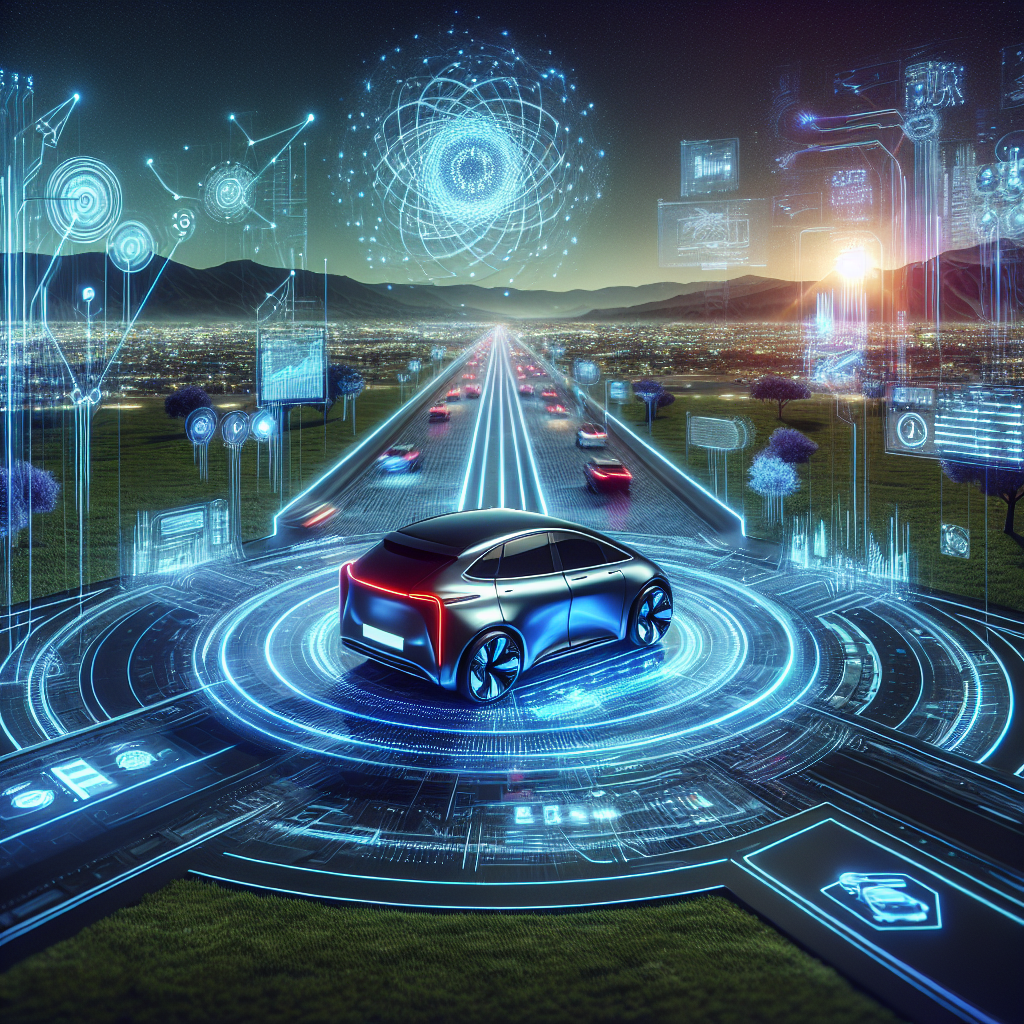Artificial Intelligence (AI) has revolutionized many industries, and one of the most exciting applications of AI is in autonomous vehicles and driverless transportation. Autonomous vehicles, also known as self-driving cars, are vehicles that can navigate and operate without human intervention. These vehicles use a combination of sensors, cameras, radar, and AI algorithms to perceive their surroundings, make decisions, and navigate through traffic.
AI plays a crucial role in making autonomous vehicles safe, reliable, and efficient. AI algorithms are used to process data from various sensors and cameras in real-time, allowing the vehicle to understand its environment and make decisions accordingly. These algorithms can detect objects, pedestrians, and other vehicles, predict their movements, and plan a safe path to navigate through traffic.
One of the key advantages of autonomous vehicles powered by AI is their ability to react faster than human drivers. AI algorithms can process information and make decisions in milliseconds, allowing autonomous vehicles to react to changing traffic conditions and avoid accidents. This level of responsiveness can significantly reduce the number of accidents on the road and make transportation safer for everyone.
In addition to safety, AI-powered autonomous vehicles offer several other benefits. They can increase efficiency by optimizing routes, reducing traffic congestion, and improving fuel efficiency. Autonomous vehicles can also provide greater accessibility to transportation for individuals who are unable to drive, such as the elderly or disabled. Furthermore, autonomous vehicles have the potential to revolutionize the transportation industry by enabling new business models such as ride-sharing and on-demand transportation services.
AI Applications in Autonomous Vehicles
AI is used in autonomous vehicles in various ways to enable them to operate safely and efficiently. Some of the key AI applications in autonomous vehicles include:
1. Object Detection and Recognition: AI algorithms are used to detect and recognize objects such as other vehicles, pedestrians, cyclists, and obstacles on the road. This information is crucial for the vehicle to understand its surroundings and navigate through traffic safely.
2. Path Planning and Navigation: AI algorithms are used to plan the vehicle’s path and navigate through traffic. These algorithms take into account factors such as traffic conditions, road signs, speed limits, and the behavior of other vehicles to plan a safe and efficient route.
3. Decision Making: AI algorithms are used to make decisions in real-time based on the information gathered from sensors and cameras. These decisions include when to accelerate, brake, change lanes, or make turns, all while ensuring the safety of the vehicle and its occupants.
4. Machine Learning: Machine learning algorithms are used to improve the performance of autonomous vehicles over time. These algorithms can learn from experience, analyze data, and adapt to different driving conditions to continuously improve the vehicle’s performance.
5. Sensor Fusion: Autonomous vehicles use a combination of sensors such as cameras, radar, lidar, and ultrasonic sensors to perceive their surroundings. AI algorithms are used to fuse data from these sensors and create a comprehensive view of the vehicle’s environment.
FAQs
Q: Are autonomous vehicles safe?
A: Autonomous vehicles powered by AI have the potential to be safer than human-driven vehicles. AI algorithms can react faster and make decisions more accurately than human drivers, reducing the risk of accidents.
Q: How do autonomous vehicles navigate through traffic?
A: Autonomous vehicles use a combination of sensors, cameras, radar, and AI algorithms to perceive their surroundings, detect objects and obstacles, and plan a safe path to navigate through traffic.
Q: What are the benefits of autonomous vehicles?
A: Autonomous vehicles offer several benefits, including increased safety, efficiency, accessibility, and the potential to revolutionize the transportation industry with new business models.
Q: How can AI improve the performance of autonomous vehicles?
A: AI algorithms, including machine learning algorithms, can learn from experience, analyze data, and adapt to different driving conditions to continuously improve the performance of autonomous vehicles.
In conclusion, AI applications in autonomous vehicles and driverless transportation have the potential to revolutionize the way we travel and make transportation safer, more efficient, and more accessible. With advancements in AI technology and continued research and development, autonomous vehicles have the potential to transform the transportation industry and improve the quality of life for people around the world.

